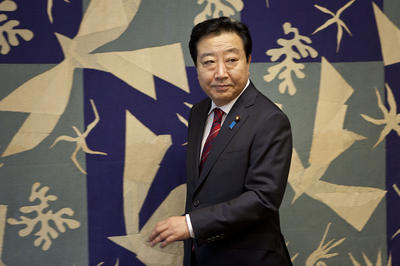Reforms take place not because of the desires of the electorate but because political leaders try to maintain factional balance within the ruling party — and all the while a line of candidates stand ready to become the next party leader.
But those who take the party leadership simply in the interests of maintaining party unity rarely enjoy enthusiastic support from the public. Once the honeymoon period is over, the expectation quickly turns into disappointment, heating up factional rivalries. Former Prime Minister Junichiro Koizumi was exceptional thanks to a maverick personality and compelling personal charisma.
The Japanese electoral system which was in place before the mid-1990s is the cause of this factional politics. Under the previous electoral system, where each district’s size ranged from three to five seats, the party that retained a majority in the Lower House needed to run more than one candidate in each district. Severe competition among Liberal Democratic Party (LDP) candidates somewhat successfully maintained its unity through to the 1990s, institutionalising factions as ‘parties within a party’. In elections, voters may express their preference among candidates while not selecting the government. Their choices have little impact on the alternation of prime ministers — that rests primarily on factional balance within the ruling party.
Following the demise of LDP dominance, the centrist coalition government introduced the dual electoral system combining single-member districts with proportional representation. The Democratic Party of Japan (DPJ) won the 2009 general election by a landslide, ousting the LDP from power for the second time. The district races take a form of two-party competition, and factions have gradually lost their importance in helping candidates in elections. But both the LDP and DPJ still remain as loose coalitions of factions.
Forty per cent of people support one of the two parties, the DPJ and LDP, and here the Japanese electorate is fairly equally divided at present. The remaining 60 per cent do not support any particular party, with some frequently changing the party they vote for — significantly influencing election outcomes. So leadership races turn into popularity contests to attract these floating voters. New prime ministers start out with relatively high approval ratings, but then face pressure from intraparty rivals as their ratings decline.
Pledging to depart from bureaucratic governance, Yukio Hatoyama led the DPJ to office in an historic victory, only to prove that the DPJ’s ability to govern is questionable. After Hatoyama’s resignation over the mismanaged Futenma Air Station issue, Naoto Kan took over the leadership and attempted to reduce the influence of kingpin Ichiro Ozawa. By mimicking Koizumi’s aggressive style of making intraparty dissidents the scapegoat for the impasse, Kan prevented his approval rating from nose-diving. But Kan maintained an offensive stance against those both inside and outside the party, even after losing the 2010 Upper House election, and failed to foster interparty cooperation to deal with the nuclear power plant crisis, thus projecting an image of himself as an obstacle to earthquake reconstruction.
In contrast, Noda’s accommodative style of leadership makes him different from his predecessors. During the DPJ leadership race, Noda announced his intention to seek a grand coalition with opposition parties and appointed a senior Upper House member close to Ozawa as the party’s secretary general.
Considering that the DPJ lacks a majority in the Upper House, Noda needs to make substantial concessions to the LDP, and perhaps dissolve the Lower House. Although less likely, Noda may even maintain the public support he presently enjoys and avoid factional friction if earthquake reconstruction efforts yield significant results, leading the DPJ to secure a majority in the Lower House. Success here would probably allow Noda to pursue fiscal reconstruction, including a consumption tax hike. But failure to make progress on the reconstruction effort will see his approval ratings sharply decline and pressure from intraparty rivals intensify.
While Noda’s policy orientation and leadership abilities are currently garnering much attention, it is still the DPJ which remains on trial. And, for the DPJ, it seems Noda is simply a means of surviving without governing. The party’s prospects are not favourable: unless factional forces are effectively managed whilst also effectively carrying out the earthquake reconstruction, the DPJ will most likely seal an intractable image of incompetence before the Japanese people.
Mikitaka Masuyama is Professor of Political Science at the National Graduate Institute for Policy Studies (GRIPS) and serves as Advisor to the President, Chair of Master’s Programs Committee, Director of Public Policy Program and Deputy Director of the Young Leaders Program.

